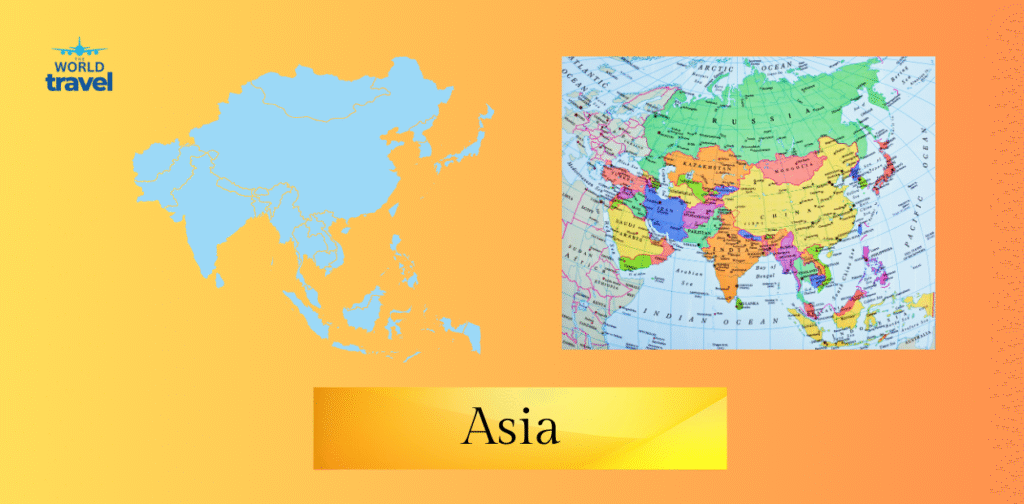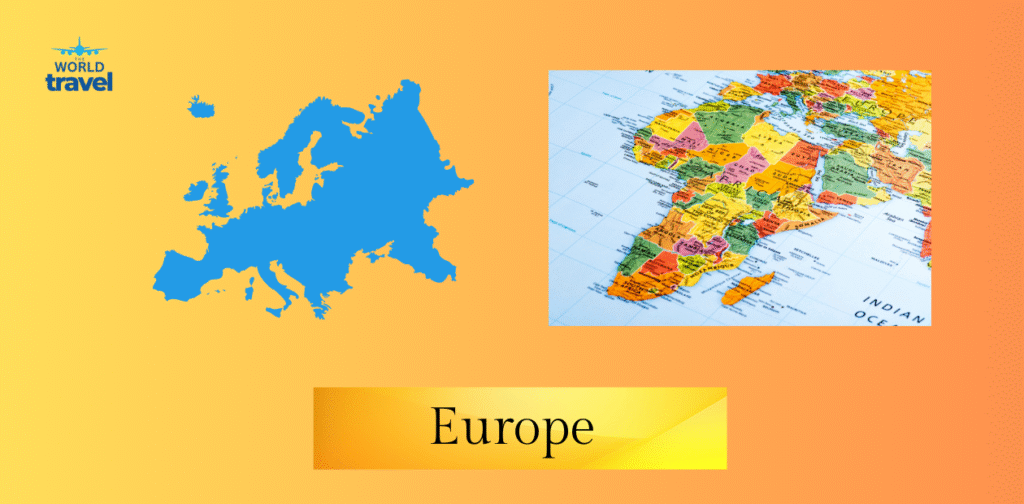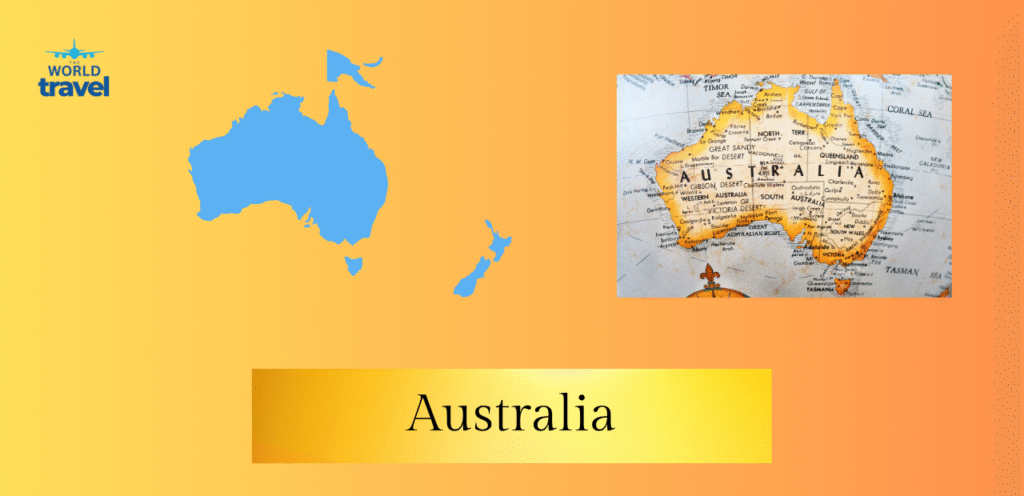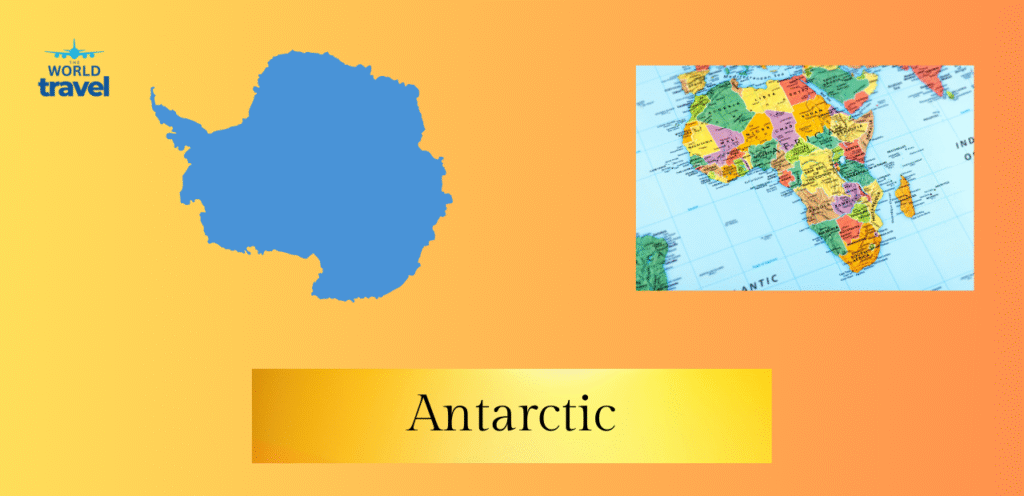Asia, Africa, Europe, America, Australia, Antarctica and the Arctic.
| CONTINENTS | ARIA (KM²) | POPULATION (BY 2020) | POPULATION SHARE (%) | NUMBER OF COUNTRIES |
| Asia | 31,033,131,150 | 4,641,054,775 | 59.54% | 48 |
| Africa | 29,648,481 | 1,340,598,147 | 17.20% | 54 |
| Europe | 22,134,900 | 747,636,026 | 9.59% | 44 |
| North America | 21,330,000 | 592,072,212 | 7.60% | 23 |
| South America | 17,461,112 | 430,759,766 | 5.53% | 12 |
| Australia | 8,486,460 | 43,111,704 | 0.55% | 03 |
| Antarctica | 13,720,000 | 0 | 0 | 0 |
1 – Asia
- Information about Asia
Asia is the largest of all continents and covers about 9% of the total Earth’s surface. With an estimated population of 4.3 billion, it is the most populous continent on Earth. Therefore, the Asian population plays a significant role in the world economy.
Asia is located in the eastern and northern hemispheres of the Earth and covers about 30% of the Earth’s total land area. It has been historically recorded that the earliest human population on Earth was from the Asian continent.
Accordingly, history has shown that 60% of the human population on the planet was previously in the Asian continent. The Asian continent has densely populated settlements and some regions are sparsely populated

The borders of the Asian continent are not well defined because there is no clear geographical demarcation between Asia and Europe. These two continents together form a large landmass commonly known as Eurasia.
Asia is bordered by the Arctic Ocean to the north, the Indian Ocean to the south, and the Pacific Ocean to the east. Asia is known for its diversity in terms of ethnic groups, history, economics, environment, culture, and governmental systems.
2 – Africa
- Information about Africa
Africa is the second largest continent and the second largest in terms of population. It is made up of 54 countries and is home to about one billion people. The majority of the human population in Africa is said to be under the age of 19. 15% of the world’s population lives in Africa. Africa also covers 20% of the world’s total land area.
Africa is located in the center of the Earth and has the equator in the middle. What makes Africa unique is the fact that its land mass stretches from the North Temperate to the South Temperate regions

The climate in Africa is largely tropical, but the southern and northern parts have temperate climates. Africa is considered the cradle of humanity because the oldest fossils of Homo sapiens ever found come from sites in the eastern part of the African continent. Africa’s greatest concern as a continent is the presence of a large number of diverse
Africa is bordered by the Indian Ocean to the southeast, the Atlantic Ocean to the west, the Red Sea and the Suez Canal to the northeast including the Sinai Peninsula, and the Mediterranean Sea to the north. Various archipelagos such as Madagascar are also part of the African continent
3 – Europe
- Information about Europe
Europe is the second smallest of all seven continents. It is made up of the western peninsula of the vast Eurasian landmass. Europe covers 2% of the Earth’s surface and 6.8% of the Earth’s total land area. Europe is made up of about 50 countries and is the third most populous continent. Russia is the largest country in Europe, covering about 40% of Europe’s land area.

Europe is separated from Asia by the Caucasus and Ural Mountains, the Caspian Sea, the Black Sea, the Ural River, and the waterways connecting the Aegean Sea and the Black Sea.
Europe is bounded by the Mediterranean Sea to the south, the Atlantic Ocean to the west, and the Arctic Ocean to the north. Europe is primarily associated with the advent of Western culture, civilization, and the Industrial Revolution.
4 – North America
- Information about North America
The North American continent is located entirely in the Northern Hemisphere. It is bordered by the Atlantic Ocean to the east, the Arctic Ocean to the north, the Pacific Ocean to the west and south, and the Caribbean Sea and South America to the southeast. It covers about 4.8% of the Earth’s surface and makes up approximately 16.5% of the Earth’s total land area.
North America is home to about 565 million people, which is about 7.5% of the world’s population. It is the third largest continent by land area and the fourth largest by population. Most of the continent’s territory is dominated by the United States of America, Mexico, Canada, and Greenland.

5 – South America
- Information about South America
South America is located in the Western Hemisphere and covers most of its land area in the Southern Hemisphere and a small part in the Northern Hemisphere. It is bordered by the Pacific Ocean to the west, the Atlantic Ocean to the east and north, and the Caribbean Sea and North America to the northwest.
It has a population of about 406 million and is the fourth largest continent by land area and the fifth most populous. South America consists of 12 states and is a subcontinent of the Americas. It has a diverse biodiversity and geographical features.
For example, the world’s largest uninterrupted waterfall, Angel Falls, is located in Venezuela, South America. The Amazon River, which is considered the world’s longest and largest river by volume, is also located on the continent. The Amazon rainforest, known as the largest rainforest on the planet, is again found in South America.

6 – Australia
- Information about Australia
Australia is a single country continent. It is the sixth largest country by total land area and the smallest of the seven continents. It is also known as an island continent due to its isolated location and small size. Australia is located on the Indo-Australian Plate and is surrounded by the Pacific Ocean and the Indian Ocean.
It is the least populated continent and boasts a high level of biodiversity. The world’s largest coral reef, the Great Barrier Reef, stretches 2000 kilometers along the northeastern coast of Australia. It consists of various archipelagos such as Tasmania and other small islands.

7 – Antarctic
- Information about Antarctic
Antarctica is the southernmost continent of all continents. According to geographers, the South Pole of the Earth is located in Antarctica. Due to these features, this continent is the most uninhabited in the entire face of the Earth.
Its population is less than 5000, making it the least populated continent on Earth. Moreover, it is home to only a few animal and plant species. Only cold-adapted organisms have adaptive mechanisms to survive in this environment.

Antarctica is the coldest continent on Earth and most of its land is permanently covered by glaciers. The glaciers are about 1.9 kilometers thick, which translates to about 98% of the entire continent.
Among the continents, Antarctica is the fifth largest, twice the size of Australia. It is known as the coldest, driest, and windiest of all the continents. It is also the continent with the highest elevation and is considered a complete desert. Temperatures in Antarctica can reach -89 degrees Celsius.
